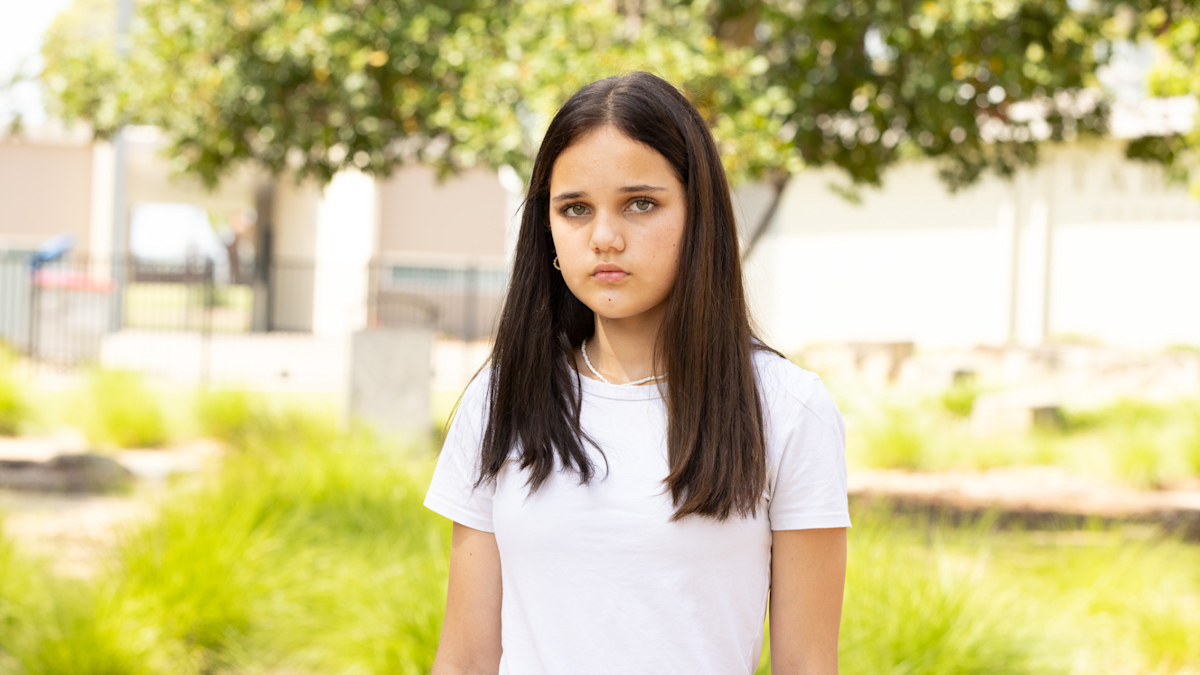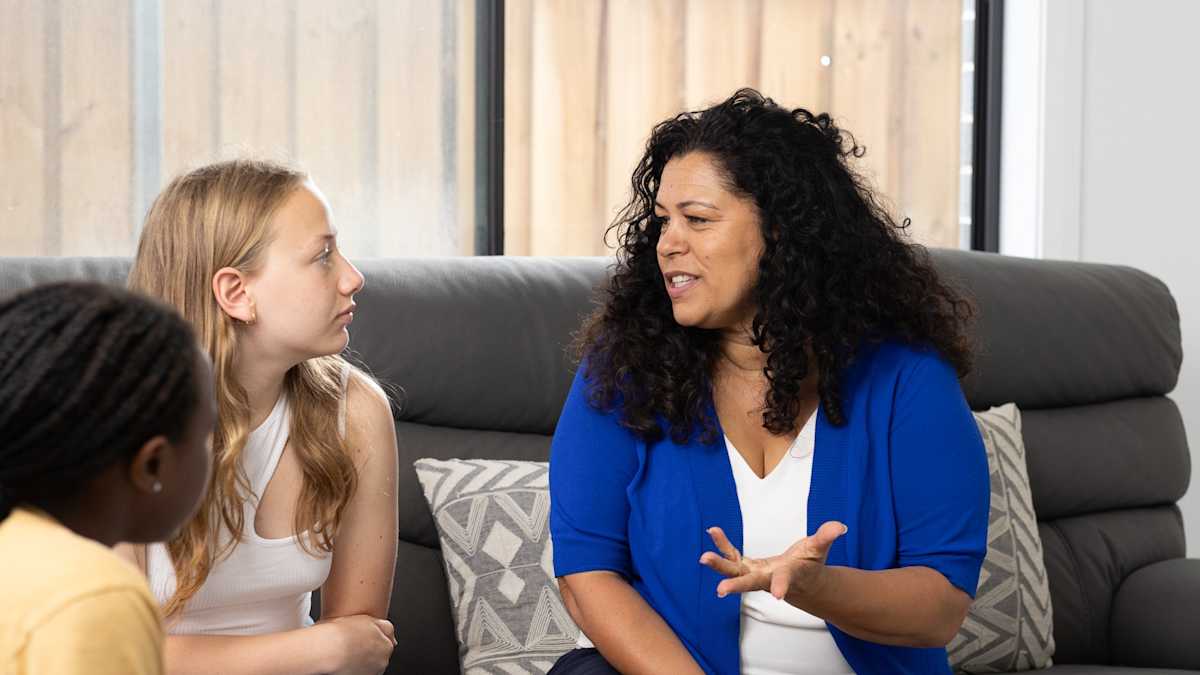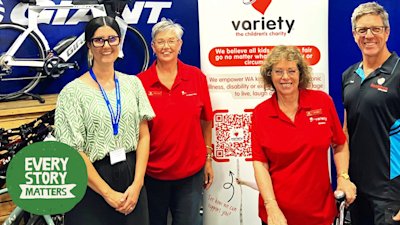"We don't have to choose between young people and community safety." - Claire Robbs.

Image: A young girl with long brown hair, wearing a white t-shirt stands outdoors, looks at the camera.
Claire Robbs, Life Without Barriers Chief Executive, gives insight into the choices we have in addressing youth crime and prioritising community safety. The below story is written in her own words.
Over the past twelve months, our screens have been flooded with alarmist images, videos and commentary of youth crime waves. We would be forgiven for thinking, given the sheer volume of what we are seeing, that young people en masse have turned down violent and antisocial paths and no community is safe.
Criminologists talk about moral panic and the damaging influence sensationalist media coverage can have on exaggerating perceptions, and in this case, it is young people who suffer the impact.
It is captivating fodder for media – images of wild young people in the throws of anti social and aggressive behaviour. Arguably nothing feeds click bait more.
The reality is, many young people engaging in these behaviours are impacted by childhood maltreatment and the significant physiological impact on brain development it can have.

Image: A young man in a white shirt and a dark jacket sits at a wooden table.
Founding partners in the Allies for Children Australia have long standing experience supporting young people which has given us a strong understanding of the typical life story and adversities these children face.
Most children with justice involvement have at least one of the following issues:
psychological damage from past trauma, abuse and/or neglect
developmental delay (either congenital or from child maltreatment)
mild to moderate intellectual disability, or another disability
acquired brain injury
a diagnosed or undiagnosed mental illness
Many children have several of these challenges that impact on their capacity to understand and make pro-social choices, and therefore significantly contribute to their engagement in offending.
To get a sense of the size of the problem, you have to look at the intricacies of the current data on youth crime and that means looking within local communities and at the types of offending that is increasing and what is in fact decreasing.
Whilst the Australian Bureau of Statistics are reporting a trend increase in some areas, in Queensland for example, early intervention and support programs are heralded as vital contributors to reducing crimes with break and enters, robbery, and assault all reported to have declined by as much as 14%.
It is understandable for communities at the heart of some of these issues to see a choice between community safety and young people. The reality is we can have both.
Throughout my near three decades of working with children and young people, I have yet to see a government willing to have a progressive law and order strategy that was actually stabilised in early intervention and support and which chooses to invest in therapeutic programs at a scale that can achieve real change in communities.
We jump to punitive responses to punish young people who are already largely experiencing the greatest hardship imaginable.
Too often, I fear we forget the inextricable link between unemployment, poverty, poor housing, stigma, discrimination, and racism, and the long term and damaging effects it can have on young minds and souls.
Children and young people at the centre of this debate are often pushed into harsh justice systems that are built for adults and which lack any restorative, rehabilitative and age appropriate services.
Community safety is the stick used to justify these policy responses.

Image: A woman sits on a couch talking to two young girls.
For young people in rural or remote areas, they are over ten times more likely than city peers to be under justice supervision. Children and young people in out-of-home care are nine times more likely to encounter the justice system.
We leave young people to languish. Around three quarters of youth detainees have not yet been sentenced. More than half detained Australian youth identify as Aboriginal or Torres Strait Islander, with detained 10 – 13 year olds twice as likely to be First Nations children.
We continue to over criminalise and over stigmatise children of the world’s oldest living culture.
So what works?
We have a great deal more available to choose from of what works than what doesn’t. Early intervention and supports for families who are vulnerable and in need of assistance is extraordinarily effective and enables long term financial return down the track.
Allies for Children Australia's founding partners continue to advocate for early intervention to prevent issues before they emerge for families. For young people who are struggling, we need more education models that don’t rely on wealth in families to access.
Education and employment are vital and programs like Multi Systemic Therapy (MST) are incredibly effective at redirecting young people from antisocial behaviour.
Over 30 years of research has proven the positive impacts MST can have on young people and their families and networks. 160 published, peer-reviewed journal articles and more than 58,000 families across all studies have shown MST can demonstrate a reduction of nearly 45% in long term re-arrest rates and that out-of-home placements were reduced by an average of 54%. The evidence is everywhere and the list goes on.
Investment in education, employment, and early interventions services can lead to improved community safety. We can choose both the thriving futures for children and safe and enjoyable communities.
The choice is not one or the other.
The Allies for Children Australia are committed to advocating the raise the age of criminal responsibility in Australia. Visit their website to learn more.


